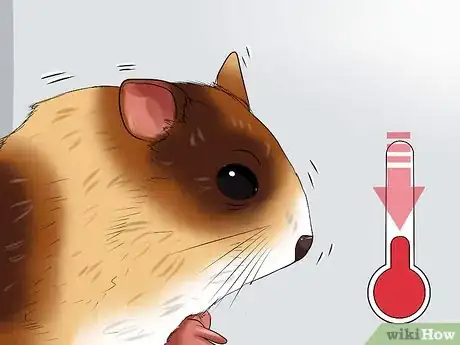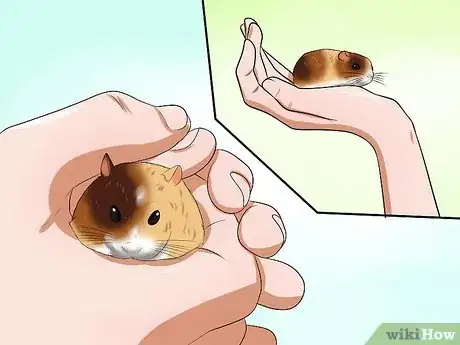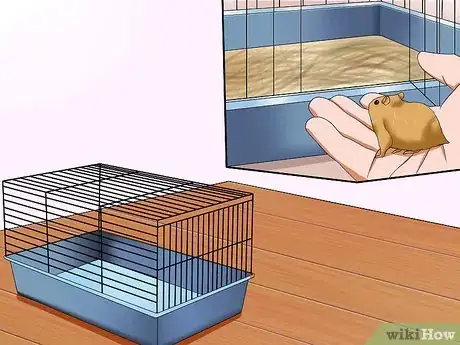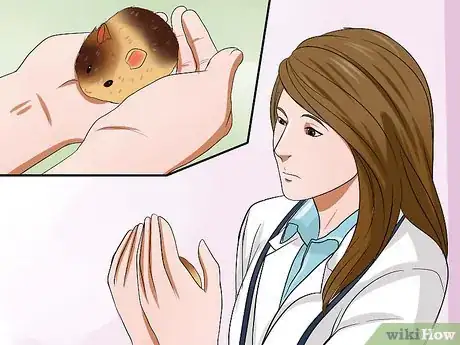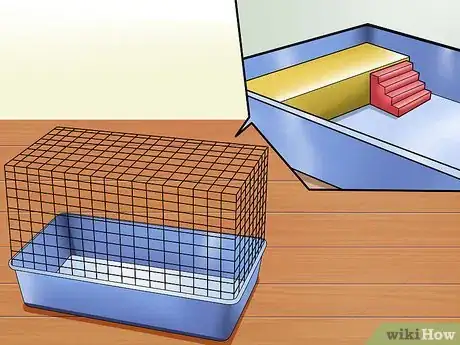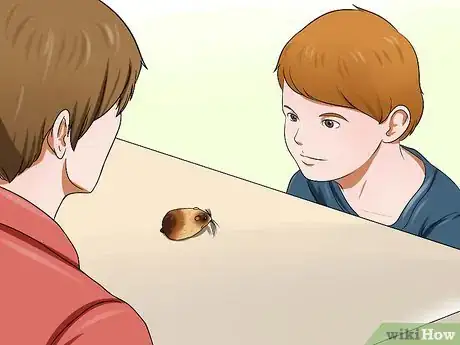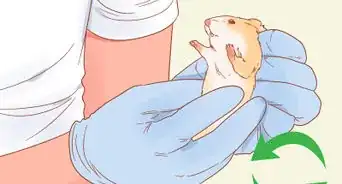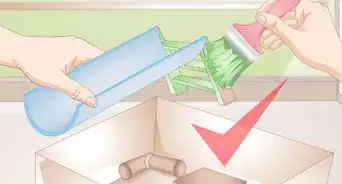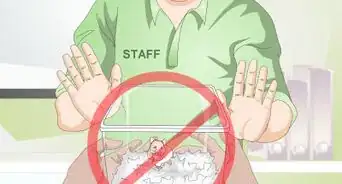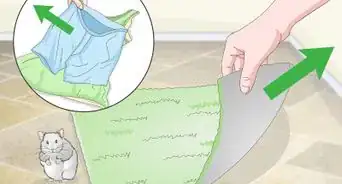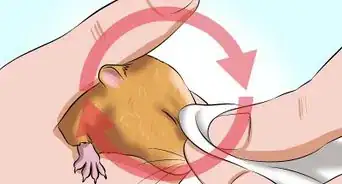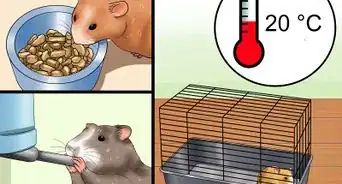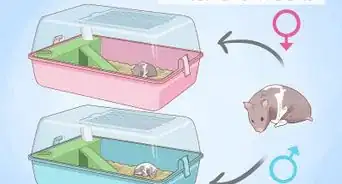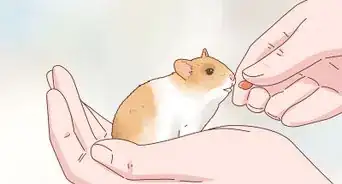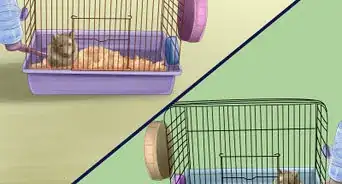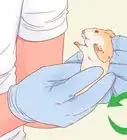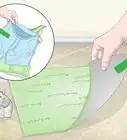This article was co-authored by Pippa Elliott, MRCVS. Dr. Elliott, BVMS, MRCVS is a veterinarian with over 30 years of experience in veterinary surgery and companion animal practice. She graduated from the University of Glasgow in 1987 with a degree in veterinary medicine and surgery. She has worked at the same animal clinic in her hometown for over 20 years.
wikiHow marks an article as reader-approved once it receives enough positive feedback. In this case, 82% of readers who voted found the article helpful, earning it our reader-approved status.
This article has been viewed 76,058 times.
Your hamster’s body may go into shock if he has taken a serious fall or suffered a major injury. Even if you didn’t see what happened, you will be able to tell that something is wrong with him. Your hamster will probably need a combination of first aid that you can give at home and treatment by your veterinarian. Act quickly when you see him in shock to help him recover and get back to normal.
Steps
Treating a Hamster in Shock
-
1
-
2Warm up your hamster. Before you take your hamster to your veterinarian, try to give him some first aid at home. The best first aid you can give is to his increase his circulation, which will warm him up. Gently pick him up and rub his body slowly.
- Be gentle when you rub him.[5] Vigorous or forceful rubbing is not necessary to improve his blood circulation.
- You should start to feel your hamster’s body warm up as you rub him.
Advertisement -
3Move your hamster. When your hamster starts warming up (even if he’s still out of it), place him back in his cage and move him to a warm, dark, and quiet area of your home to continue recovering.[6] The quietness of the room will help him recover without being startled by loud noises and other distractions.
- Check on him after about 30 to 60 minutes to see if he has improved. If not, take him to your veterinarian for further treatment.[7]
-
4Take your hamster to your veterinarian. Even if your hamster is showing signs of improvement, your veterinarian should still check him out. In addition, if your hamster is seriously injured, your veterinarian will need to treat that injury.
- Your veterinarian may give your hamster some fluids to improve his circulation.
- Depending on the extent of your hamster’s underlying injuries, you may need to give him pain medication to help him recover. Your veterinarian will let you know what type of treatment and medication your hamster will need.
Preventing Injury in Your Hamster
-
1Make your hamster’s cage safer. As much as your hamster likes to run and play, he may play a little too hard and injure himself in his cage. You will need to ‘injury-proof’ your hamster’s cage to prevent the risk of fall or injury. For example, if the cage is multi-level, make sure your hamster has a sturdy ladder or ramp so he can get from one level to the other without falling.
- If the cage already has wire ramps or ladders, cover them with a solid material, such as cardboard, laminate flooring, or coroplast[8]
-
2Keep a close eye on your hamster during playtime. Playtime outside of the cage is important for your hamster. However, he could seriously injure himself when he is outside of his cage. If you have him in his hamster ball, keep him as far away from the stairs as possible! A tumble down the stairs could cause injury serious enough to lead to shock.
- Rolling down the stairs in the hamster ball could also knock your hamster unconscious. If he is unconscious and in shock, he will need immediate veterinary care.
- When your hamster is in the hamster ball, keep him in an enclosed room so there is no chance he could roll near or down the stairs. Another possible solution is to lay a hula-hoop on the ground, and have the hamster ball roll around in that.
- If your hamster is allowed to run free in the room, make sure he does not climb on any furniture. He could suffer a serious injury if he jumps or falls from the furniture.
-
3Supervise children who are handling your hamster. Often, children can be rough with small pets, such as hamsters, without knowing they are actually hurting the animal. If you have small children, watch them as they handle your hamster. That way, if they are handling him too roughly, you can intervene and place the hamster safely back in his cage.
- You could also turn this time into a teaching moment on how to properly hold a hamster.
Warnings
- Your hamster could develop major health problems if he does not receive prompt first aid and treatment for his shock.⧼thumbs_response⧽
- Your hamster could go into shock after a serious fall or injury. Make his cage and play area as safe as possible to prevent falls and injuries.⧼thumbs_response⧽
References
- ↑ http://www.mayoclinic.org/first-aid/first-aid-shock/basics/art-20056620
- ↑ https://www.avma.org/public/EmergencyCare/Pages/Basic-Pet-First-Aid-Procedures.aspx#shock
- ↑ http://hamsterific.com/hamster-illness-and-injury-guide/
- ↑ https://www.avma.org/public/EmergencyCare/Pages/Basic-Pet-First-Aid-Procedures.aspx#shock
- ↑ http://hamsterific.com/hamster-illness-and-injury-guide/
- ↑ http://hamsterific.com/hamster-illness-and-injury-guide/
- ↑ http://hamsterific.com/hamster-illness-and-injury-guide/
- ↑ http://www.northstarrescue.org/pet-care-information/pet-hamster-care/143-a-guide-to-pet-syrian-hamster-cages
About This Article
If your hamster has had a bad fall or suffered a major injury, look for signs that it is in shock. Your hamster is likely in shock if it appears limp and has a dazed look in its eyes, feels cold to the touch, starts shivering, or develops shallow breathing. In this case, hold your hamster in your hands and rub it gently to warm it up and increase blood circulation. As it starts to warm up, take it to a warm, dark, quiet area to continue recovering. Then, after 30 to 60 minutes, take your hamster to your veterinarian to have any injuries evaluated and treated. For more tips from our Veterinary co-author, like how to prevent your hamster from getting hurt, keep reading!
